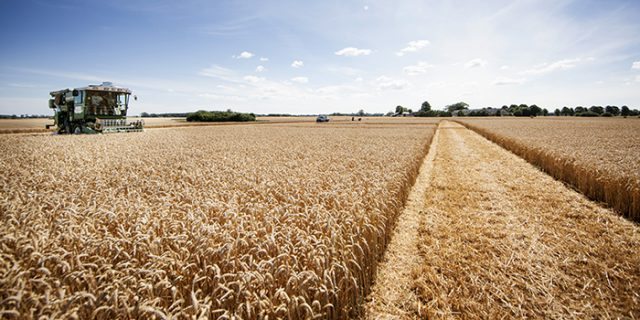Glucose from straw may play a big role in the future production of many everyday products.
An award winning PhD project from DTU Chemical Engineering aims to uncover how new processes can help increase the profit values from straw and make it an effective and profitable business.
As the world population continues to grow and the search for alternative resources intensifies as a result, researchers are always looking at different and more efficient ways to use the materials at our disposal.
For example, a residual product from agriculture, straw, is mostly incinerated for energy, but could instead prove to be a valuable source of building blocks for many other products, such as pharmaceuticals, cosmetics and textiles.
These products can be derived from glucose and another monosaccharid, which can be obtained from straw and other sources when they are processed.
The challenge is that types of sugar like glucose and xylose, although they are used in different applications, have very similar chemical structures and are therefore difficult to separate.
However, if a PhD project at DTU Chemical Engineering goes as planned, this could be a different story in the future.
The idea is to use membranes to separate different sugar molecules in bio-refineries.
An idea, which PhD student Sofie Thage Morthensen recently secured a travel grant from EliteForsk.
Super selective
“We all use high value products and at the same time we have to feed a growing world population, which increases the need for alternative resources, such as biomass. We have biomass everywhere – straw for example,” says Sofie Thage Morthensen, who spends her time at the Center for BioProcess Engineering.
“Membranes are super selective materials with the potential to separate sugar molecules at a higher throughput and at milder process conditions compared to other separation processes,” she continues.
For certain applications, the membranes can become even more effective with the use of enzymes as catalysts to modify the process stream.
In scientific terms, the concept is known as “reactive membrane separation”.
A costly process
However, as is the case with most concepts, economy has a big say in whether or not it will become a success – and right now Morthensen is faced with some difficult challenges.
For example, enzymes often cost more than the product they contribute to produce, which requires the ability to use the enzymes over a longer period.
“We also work with a feedstock – straw – that is generally a waste product and hence has very low value,” says Morthensen.
“In order to make it profitable to reuse straw instead of incinerate or deposit it, we have to develop processes with maximum yield and efficiency.”
One of the next steps for her will be to test the reactive membrane separation on an actual flow of biomass.
Her project is part of the Biovalue Spir platform that aims to increase the importance of biomass in the future.
Story by Rasmus-Hoejmark-Ravn, Technical University of Denmark










